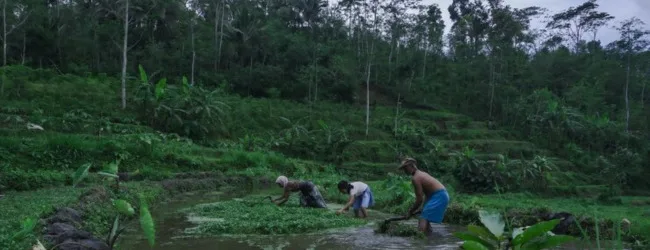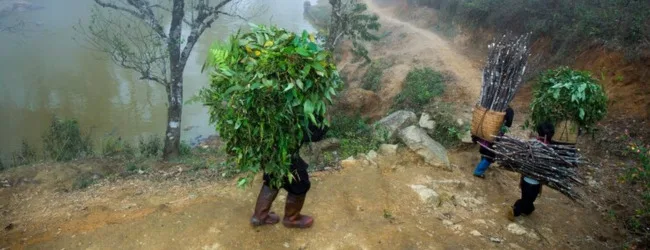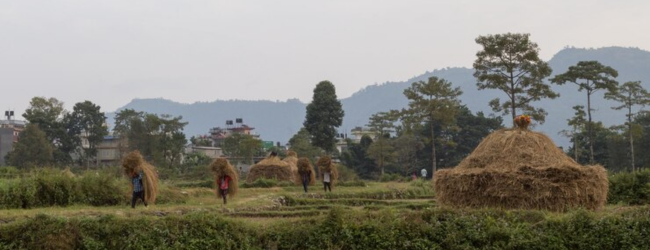Table of contents
- Understanding the Basics: What Does Primitive Subsistence Farming Entail?
- Key Characteristics of Primitive Subsistence Farming
- Types of Primitive Subsistence Farming
- Why is Primitive Subsistence Farming Still Practiced in India?
- Challenges Faced by Primitive Subsistence Farmers
- Primitive Subsistence Farming vs. Other Farming Types
- The Future of Primitive Subsistence Farming
- Conclusion
- Frequently Asked Questions (FAQs)
Primitive subsistence farming represents one of the oldest forms of agriculture known to humankind. It’s a method deeply rooted in tradition and focused purely on survival. Unlike modern commercial farming that feeds markets, primitive subsistence farming is all about feeding the family or the local community. This guide delves deep into what this type of farming entails, its characteristics, types, relevance in India, challenges, and future prospects.
Understanding the Basics: What Does Primitive Subsistence Farming Entail?
At its core, primitive subsistence farming is a system where farmers grow food crops primarily to meet the needs of themselves and their families.
- Self-Sufficiency: The primary goal is survival and self-sufficiency, not profit.
- Minimal Surplus: Production is usually just enough for the family or community, with very little, if any, surplus left to sell or trade in markets.
- Ancient Roots: It’s considered a very old method, often practiced by indigenous communities in specific pockets around the world, including parts of India.
Key Characteristics of Primitive Subsistence Farming
This farming method has several distinct features:
- Small Land Patches: Cultivation happens on small, often scattered plots of land.
- Primitive Tools: Farmers rely on basic, traditional tools like hoes, dao (a type of cutting tool), and digging sticks. Machinery or even animal power is rarely used.
- Family/Community Labor: The entire family or community members provide the necessary labor. It’s highly labor-intensive.
- Dependence on Nature: Farming activities are heavily dependent on natural factors like the monsoon for water, natural soil fertility, and suitable environmental conditions. There’s little external input to control these factors.
- No Modern Inputs: There is minimal or no use of chemical fertilizers, pesticides, insecticides, or high-yielding variety (HYV) seeds.
- Low Productivity: Due to the lack of modern inputs and reliance on natural fertility, the yield per unit of land (productivity) is generally low.
- Focus on Food Crops: Cereals and other essential food crops needed for survival are prioritized.
- Land Rotation: Often, when the soil fertility of a plot decreases after a few years, farmers shift to and clear a new patch of land for cultivation.
Types of Primitive Subsistence Farming

There are two main types recognized under this category:
1. Shifting Cultivation (Slash-and-Burn Agriculture)
This is perhaps the most well-known form of primitive subsistence farming.
The Process:
- Farmers select a patch of forest land.
- Trees and vegetation are cut down and left to dry.
- The dried vegetation is burned (‘slash and burn’). The resulting ash adds nutrients (like potash) to the soil, temporarily increasing fertility.
- Crops are grown on this cleared patch for a few years until the soil fertility declines.
- The farmers then abandon this plot and move to clear a fresh patch of land, repeating the process.
- The abandoned plot is left fallow for several years, allowing natural vegetation to regrow and soil fertility to replenish (known as the ‘fallow period’ or ‘jhum cycle’).
- Highlight: Known by Various Names Globally and in India: This practice has many local names, reflecting its widespread historical use.
- In India:
- Jhum or Jhumming: Widely used in Northeastern states like Assam, Meghalaya, Mizoram, Nagaland, Arunachal Pradesh.
- Bewar or Dahiya: Madhya Pradesh
- Podu or Penda: Andhra Pradesh & Odisha
- Pama Dabi or Koman or Bringa: Odisha
- Kumari: Western Ghats
- Valre or Waltre: South-eastern Rajasthan
- Khil: Himalayan belt
- Kuruwa: Jharkhand
- Dipa: Bastar district (Chhattisgarh) and Andaman & Nicobar Islands
- Pamlou: Manipur
- Internationally: ‘Milpa’ in Mexico & Central America, ‘Roca’ in Brazil, ‘Masole’ in Central Africa, ‘Ladang’ in Indonesia, ‘Ray’ in Vietnam.
- In India:
- Pros:
- Cost-Effective: Requires very little capital investment.
- Nutrient Cycling: Uses natural processes (ash) to fertilize the soil initially.
- Allows Natural Regeneration: If fallow periods are long enough (traditionally 10-20 years or more), the forest can regenerate, and soil fertility can recover.
- Cons:
- Deforestation: Clearing forests leads to habitat loss and loss of biodiversity.
- Soil Erosion: Exposed soil on slopes is prone to erosion by wind and rain, especially during heavy monsoons.
- Unsustainable with Population Pressure: When more people need land, fallow periods shorten (sometimes to just 3-6 years). This doesn’t allow the soil or forest to recover fully, leading to severe land degradation.
- Air Pollution: Burning contributes to air pollution and releases greenhouse gases.
- Loss of Valuable Timber: Forest resources are destroyed.
2. Nomadic Herding
This type involves pastoralists moving from place to place with their animals in search of pasture and water.
The Process: Nomads do not live permanently in one place but move along established routes based on seasonal availability of grazing grounds and water. Their life revolves around their livestock.
Reliance on Animals: Animals like sheep, goats, cattle, yaks, camels, horses, and reindeer (depending on the region) provide milk, meat, wool, hides, and transport. They often trade these products for grains and other necessities.
Regions: Practiced mainly in arid, semi-arid, and mountainous regions where crop cultivation is difficult. This includes areas in Sahara, Central Asia, parts of India, East Africa, and northern Eurasia.
Indian Examples: Several communities in India traditionally practice nomadic or transhumant (seasonal migration) pastoralism:
- Gujjars and Bakarwals: Found mainly in Jammu & Kashmir and parts of Himachal Pradesh, primarily herding sheep and goats, migrating between summer pastures in higher mountains and winter pastures in lower plains/hills. The Van Gujjars herd buffaloes.
- Gaddis: A shepherd community in Himachal Pradesh.
- Bhotiyas and Gujjars: In the mountains of Uttarakhand.
- Monpas: In Arunachal Pradesh.
Challenges:
- Shrinking Grazing Lands: Traditional grazing routes and pastures are diminishing due to agricultural expansion, infrastructure development, and declaration of forests/wildlife sanctuaries (historical policies like the Indian Forest Act, 1927 and Wildlife Protection Act, 1972 restricted access, though the Forest Rights Act, 2006 aimed to address some historical injustices, its implementation faces hurdles).
- Climate Change: Erratic weather patterns affect pasture availability and water sources.
- Conflicts: Disputes sometimes arise with settled agricultural communities over land and resources.
- Limited Access: Nomadic communities often lack access to education, healthcare, and markets.
- Policy Neglect: Historically, policies often aimed at settling nomads rather than supporting their mobile lifestyle, though the creation of a “pastoral cell” by the Indian government in 2023 is a recent step towards addressing their specific needs.
💡 Pro Tip: If you want to start farming but have too many doubts, connect with a farming expert from Boss Wallah for guidance – https://bw1.in/1116
Why is Primitive Subsistence Farming Still Practiced in India?

Despite modernization, primitive subsistence farming persists in certain pockets of India, particularly among tribal communities in hilly and forested regions like the Northeast, parts of Central India, and the Western and Eastern Ghats.
- Cultural Heritage: For many communities, it’s deeply intertwined with their identity, traditions, and social structure.
- Geographical Constraints: Practiced in areas with difficult terrain (hills, forests) where modern settled agriculture is challenging or impossible.
- Lack of Alternatives: Limited access to other livelihood opportunities forces people to continue traditional practices.
- Land Tenure: Small and fragmented land holdings, sometimes due to inheritance laws, make large-scale farming unviable.
- Historical Estimates: While precise current figures are hard to come by, past estimates (like the Task Force on Shifting Cultivation) indicated that hundreds of thousands of families, especially in Northeast India, were dependent on shifting cultivation. It remains significant for certain populations.
Challenges Faced by Primitive Subsistence Farmers
Practitioners of this ancient farming method face numerous modern challenges:
- Declining Soil Fertility & Land Degradation: Shortening shifting cycles exhaust soil nutrients faster than they can replenish. Nomadic routes face pasture degradation.
- Deforestation & Biodiversity Loss: Particularly acute with slash-and-burn methods.
- Climate Change Vulnerability: Extreme weather events (droughts, floods) and changing monsoon patterns severely impact yields and pasture availability, as they rely heavily on natural conditions.
- Poverty & Limited Market Access: Producing little surplus means limited income, trapping families in poverty. Remote locations often mean poor access to markets, credit, healthcare, and education.
- Food Insecurity: Relying on low yields makes families vulnerable to hunger if crops fail or livestock perish.
- Land Tenure Insecurity: Lack of formal land titles can lead to displacement or conflicts, especially when traditional lands overlap with state forests or development projects.
- Policy Conflicts: Development policies and conservation efforts sometimes clash with the needs and rights of these traditional communities.
Primitive Subsistence Farming vs. Other Farming Types
It’s useful to contrast primitive subsistence farming with other major types:
| Feature | Primitive Subsistence Farming | Intensive Subsistence Farming | Commercial Farming |
| Primary Goal | Self-sufficiency (family needs) | Maximize output from small land (family needs + small surplus) | Profit maximization (market sale) |
| Land Size | Small patches, often shifted | Small, permanent plots | Large land holdings |
| Labor | Family/community, traditional tools | High labor input per unit area, simple tools, maybe animals | Capital-intensive (machines, technology), hired labor |
| Inputs | Minimal/none (natural fertility, monsoon) | May use some manure, irrigation, intensive labor | High use of HYV seeds, fertilizers, pesticides, irrigation, machines |
| Productivity | Low | High per unit area, but maybe low per laborer | High overall productivity |
| Surplus | Little to none | Small surplus possible | Large surplus for market sale |
| Crop Focus | Food crops for survival | Mainly food crops (e.g., rice) | Market-driven cash crops (e.g., cotton, sugarcane, tea, coffee) |
| Indian Examples | Jhum cultivation, Nomadic herding | Wet rice cultivation in densely populated areas (e.g., Kerala, WB) | Plantations (tea in Assam), Wheat/Rice (Punjab), Sugarcane (UP) |
The Future of Primitive Subsistence Farming

The future of primitive subsistence farming is complex. While it represents a deep cultural heritage and adaptation to specific environments, its current forms often struggle with sustainability and poverty.
Transition Challenges: Moving away from these practices requires viable alternative livelihoods, which are often lacking.
Need for Support: Sustainable development requires approaches that respect cultural practices while improving livelihoods and reducing negative environmental impacts. This could involve:
- Improving shifting cultivation cycles (agroforestry, improved fallow management).
- Supporting pastoral communities with better access to veterinary services, markets, and securing grazing rights.
- Promoting diversification of income sources.
- Government Initiatives: While general schemes like PM-KISAN (income support), Soil Health Cards, PM Fasal Bima Yojana (crop insurance), Paramparagat Krishi Vikas Yojana (PKVY) (organic farming promotion), and the National Mission on Natural Farming exist for the broader agricultural sector, specific, targeted support for the unique needs of primitive subsistence farmers is crucial. The Forest Rights Act (2006) and the creation of a Pastoral Cell (2023) are steps but require effective implementation.
- Balancing Act: The key lies in finding a balance between preserving valuable traditional knowledge and ecological adaptations while ensuring food security, economic upliftment, and environmental sustainability for these communities.
Need Expert Guidance?
Starting a business can be challenging, but you don’t have to do it alone! At Boss Wallah, our 2,000+ business experts are ready to provide valuable insights and guidance. Whether you need help with marketing, finance, sourcing, or any other area of any business, our business experts are here to help you succeed: https://bw1.in/1116
Confused about Which Business to Start?
Want to start your own business but unsure which one to choose? Explore Boss Wallah, where you’ll find 500+ courses by successful business owners, featuring practical, step-by-step guides on starting and growing various businesses.
Find your perfect business idea today: https://bw1.in/1111
Conclusion
Primitive subsistence farming, encompassing practices like shifting cultivation and nomadic herding, is a testament to human adaptation to diverse environments over millennia. Practiced on small land patches with traditional tools and family labor, its primary aim is self-sufficiency. While still prevalent in pockets of India, particularly among tribal communities in challenging terrains, it faces significant hurdles today – from environmental degradation due to increased pressure on land, to climate change impacts, poverty, and policy challenges.
Understanding this farming system is crucial not just for appreciating agricultural diversity but also for formulating sensitive and effective strategies to support the livelihoods and preserve the cultural heritage of the communities who practice it, while guiding transitions towards more sustainable futures.
Frequently Asked Questions (FAQs)
What is the main purpose of primitive subsistence farming?
The main purpose is to produce enough food to feed the farmer’s family or local community, focusing on self-sufficiency rather than selling produce for profit.
What are the two main types of primitive subsistence farming?
The two main types are Shifting Cultivation (also known as slash-and-burn agriculture or Jhumming in India) and Nomadic Herding.
What kind of tools are used in primitive subsistence farming?
Simple, traditional tools like hoes, dao (a cutting tool), and digging sticks are primarily used. Modern machinery is generally absent.
Why is shifting cultivation also called ‘slash-and-burn’?
Because the process involves cutting down vegetation (slash) and then burning it (burn) to clear the land for cultivation and use the ash as fertilizer.
Where is primitive subsistence farming mainly practiced in India?
It is practiced in specific pockets, often by tribal communities, in hilly and forested areas like the Northeastern states, parts of Odisha, Madhya Pradesh, Andhra Pradesh, the Western Ghats, and the Himalayan belt. Nomadic herding is common in arid/semi-arid regions like Rajasthan and mountainous areas like Jammu & Kashmir and Himachal Pradesh.
Is primitive subsistence farming sustainable?
Traditionally, with low population density and long fallow periods (for shifting cultivation) or vast grazing lands (for nomadic herding), it could be sustainable. However, under current pressures (population growth, shrinking land availability), it often leads to environmental degradation like deforestation and soil erosion, making it less sustainable.
What are the biggest challenges for nomadic herders in India today?
Major challenges include the loss of traditional grazing lands due to agriculture, development, and restrictive forest policies; impact of climate change on pastures; conflicts over resources; and limited access to markets, education, and healthcare.
How is primitive subsistence farming different from commercial farming?
Primitive subsistence farming focuses on family needs using traditional methods on small plots with low output and no surplus. Commercial farming focuses on large-scale production for market profit using modern technology, large land areas, and high inputs, generating significant surplus.
Why do farmers practicing primitive subsistence farming have low productivity?
Productivity is low because they rely on natural soil fertility and rainfall, use basic tools, and do not use modern inputs like chemical fertilizers, pesticides, or high-yielding seeds.


